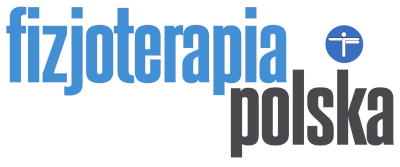Waldemar Andrzejewski, Krzysztof Kassolik, Paweł Adam
Waldemar Andrzejewski, Krzysztof Kassolik, Paweł Adam – The evaluation of the efficacy of medical massage in degenerative changes of the lumbar spine. Fizjoterapia Polska 2006; 6(3); 198-205
Abstract
Background. Low back pain caused by degenerative changes is a common reason for long-term pharmacological treatment utilizing analgesic medications, anti-inflammatory medications and medication decreasing muscle tension. Also therapeutic methods from the realm of physiotherapy are used in the treatment: kinesitherapy, physiotherapy and massage. In the case of medical massage based on the principle of tensegrity, therapists have individual approach to the patient. They assess tonus of soft tissue of the motor apparatus, localize pain and the ways it spreads. Such approach increases the likelihood that the therapy will succeed and can improve its efficacy. The study is an attempt to evaluate the efficacy of medical massage performed in people with degenerative changes of the low back. Material and methods. The participants of the study were 30 people in the age range 42-65 (mean age 53.5): 19 women and 11 men, who reported to the physicians with low back pain. Medical examination and X-Ray images indicated degenerative changes in the lumbar spine. The procedures were performed 3 times a week for 2 weeks. Each procedure lasted 45-60 min. Health evaluation record was used to evaluate the efficacy of the therapy. Medical history of a patient was taken on the basis of the record and physical examination of pressure sensitivity of soft tissue of the motor apparatus was performed. Another tool of the research method was a survey checking the patient’s subjective assessment of the state of health as well as frequency and intensity of the lumbar spine pain and lower limbs pain. Results. Pressure sensitivity of the examined structures decreased or regressed in all patients as a result of the therapy. After a series of procedures, pain, overall feeling of well-being and current state of health improved to various degrees. In all cases, the incidence and intensity of pain in the lower limbs decreased after the therapy. Conclusions. Medical massage can be an effective method of physiotherapeutic treatment in cases of pain connected with degenerative changes of the lumbar spine.
Key words:
medical massage, degenerative changes of the lumbar spine, pain
| Invalid download ID. |
Pobierz bezpłatnie artykuł w j. angielskim |

